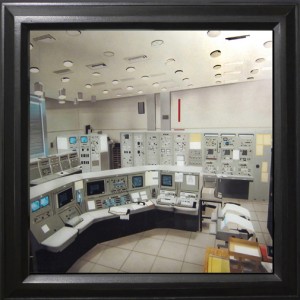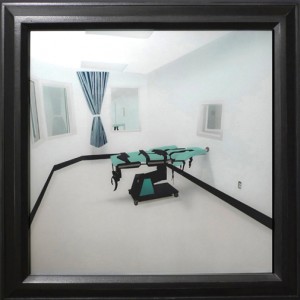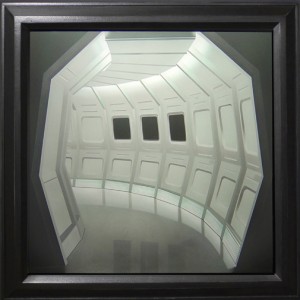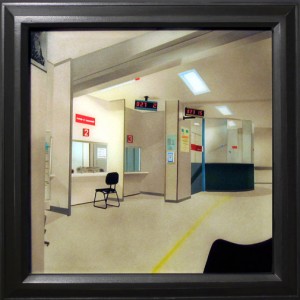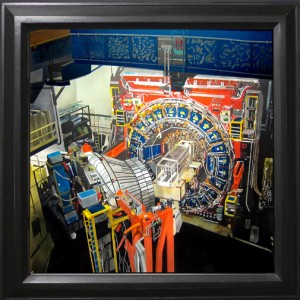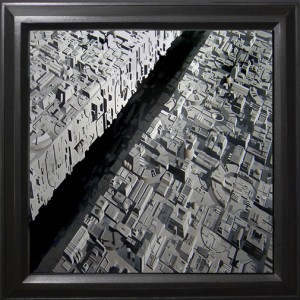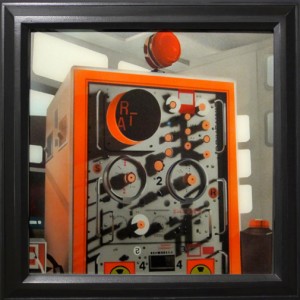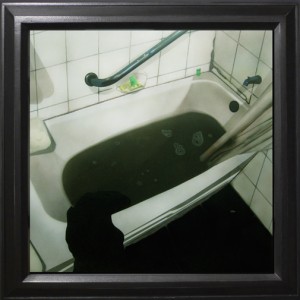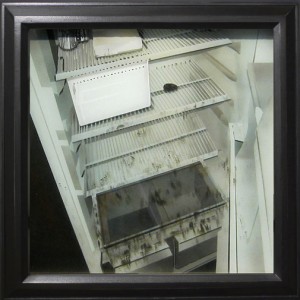February 28th, 2014 – March 22nd, 2014
Opening Reception: Friday, February 28th, 7-9pm
Young’s reverse paintings, rendered on the underside of thick glass with automotive paints, are investigations of places and objects that are familiar to us yet feel foreign. The subjects in many of Young’s paintings are iconic rooms and objects associated with bustling activity. The spaces are presented devoid of people and out of context; the empty set of television’s The Price is Right, NASA’s Control Room, and CERN’s Large Hadron Collider are captured in rare moments of inactivity. We are left with an opportunity to examine these rooms and objects closely, to inspect the complex details offered within them, and through this process garner a greater understanding of their purpose and the people, out of frame, who put them to use.
Young also depicts objects of historical or personal significance that are captivating in their graphic qualities, starkly and consciously superficial, attractive yet repelling. Abraham Lincoln’s soiled death pillow is presented alongside portraits of a stained bathtub, an open filthy refrigerator, and a previously frozen TV dinner.
The imagery is evocative of childhood wonder and curiosity, yet haunting and resonant of the out-of-body. Ensconced in monumental, graphite-finished wooden frames, each painting boldly invites our attention. Collectively, all of the works presented in Trace Evidence arouse our sense of mystery and tempt us to conduct our own thorough investigative analysis of the artist’s intention.
Doug Young has exhibited widely in New York and Chicago. He holds a BFA from The School of the Art Institute of Chicago (1995) and an MFA from Pratt Institute (1997). These images mark a departure for Young, for he has worked primarily as a sculptor during the last decade. But in line with his penchant for Americana, his reverse paintings on glass evoke time-honored traditions in the folk arts and old Hollywood. In 2001 he was awarded by the Guinness Book World Records for the longest nonstop banjo performance in history—24 hours total.
